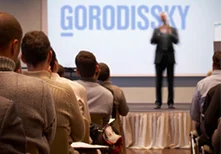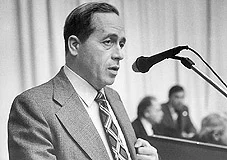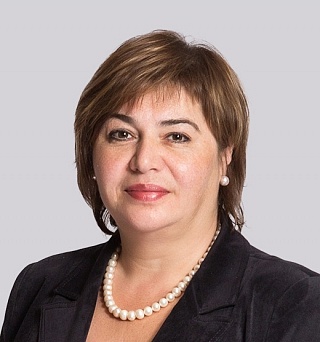Pharmaceutical inventions and patent term extension procedure
16 April 2019Once the Patent Law entered into effect in 1991, it became possible in Russia to get a national patent directed at pharmaceutical inventions, such as:
- a compound or a group of compounds of general formula (Markush formula);
- a pharmaceutical composition;
- a biotech product;
- a preparation process;
- a new use of a known product;
- a method for treatment;
- prophylaxis; and
- diagnostics.
When the Eurasian Patent Convention entered into effect in 1995, it became possible to get a Eurasian patent on those same pharmaceutical inventions.
Characterisation of inventions
Nevertheless, until quite recently, Russian patent legislation contained no special restrictions regarding the selection features for characterisation for any of the listed inventions.
For example, a ‘second medical use’ invention could be characterised in the claims using the following subject matters:
- a pharmaceutical composition for intended use, comprising product X;
- a medicine for intended use, which is product X;
- use of product X for intended use;
- use of product X for manufacturing a medicine for intended use; and
- a method for the treatment of disease Y, comprising administration of product X.
Any of the above could include additional characteristics, including:
- the physical properties of the pharmaceutical composition (eg, solubility and composition release profile, among others);
- indication of the specific dosage form of composition;
- product amount defined by a dosage or dosage range; and
- a regime of product administration.
Moreover, all features characterising the invention in an independent claim have been considered when assessing novelty and inventive step. As a result, a pharmaceutical composition or medicine is distinguishable from known products by only its new intended use and could therefore be recognised and patented.
For the first time, the Eurasian Patent Organisation has introduced a limitation on the features applicable for the characterisation of pharmaceutical compositions.
In June 2012 amended rules for the preparation, filing and consideration of Eurasian applications with the Eurasian Patent Office entered into force, including Item 2.5.4.4 stating that: “to characterise a composition it is not legal to use as the features thereof the characteristics, which do not direct to the composition (for example, conditions and regimes of use of this composition in some process, method), quantitative parameter (measured or calculated), characterising one or more properties of the compositions if said parameter is used as the only feature characterising composition in the independent claim (for example, parameter of the strength of lamination, resistance to crack under stress, pharmacokinetics profile, etc.); technical result achieved when composition is used. Use of features directed to a method for treatment or prophylaxis of a disease (for example indication of doses, conditions or regimes of use of the composition or the drugs comprising said composition) is not allowed for characterization of the composition.”
In practice, the Eurasian Patent Office has not allowed claims directed to a composition or medicine where the only distinctive feature was intended use.
Further, if features such as dosage of the active agent and its administration regime should be used for the characterisation of the invention, the only possible subject matter for protection of such invention through a Eurasian patent is a method for treatment.
Until June 2016, Russian patent legislation contained no such restrictions.
New rules for the preparation, filing and consideration of applications for inventions entered into force in Russia in July 2016. Item 70 of the rules stipulates that the provisions for novelty of the invention assessment contain the following: “the invention, the only distinctive feature of which is the intended use, can be recognised as novel if said intended use is the result of some product characteristics, which distinguish it from the known product. If the new intended use is merely the result of some intrinsic properties of the claimed product, which properties have not been known before, the claimed product is not recognised to be novel. In this case, the Applicant has the right to characterise this invention as ‘use of the product for (new intended use)’.”
The introduction of limitation means a ban on the protection of second medical use inventions using product claim formats such as ‘pharmaceutical composition’ and ‘medicine’. The acceptable claims formats for the protection of second medical use inventions are ‘use’ and ‘method for treatment’. ‘Use’ claims are preferable form a rights enforcement perspective.
On 1 October 2018 the rules and requirements for patent application documents were added with a stipulation limiting the features which could be used for the characterisation of compositions. Item 39 of the requirements stipulates that the features used for the characterisation of inventions directed at compositions and pharmaceutical compositions, among others, was added with Subitem 3 comprising the following feature limitations: “To characterise a composition it is prohibited to use as the features thereof the characteristics, which are not directed at composition (for example, conditions and regimes of use of this composition in some process, method), quantitative parameter (measured or calculated) characterising one or more properties of the composition if said parameter is used as the only feature characterising composition in the independent claim (for example, parameter of the strength of lamination, resistance to crack under stress, pharmacokinetics profile, etc.); technical result achieved when composition use. Use of features directed to a method for treatment or prophylaxis of a disease (for example, indication of doses, conditions or regimes of use of the composition or the drugs comprising said composition) is not allowed for characterisation of the composition.”
Assessment of novelty and level of invention
Items 70 and 76 of the rules were added with a note stipulating that the features indicated in Subitem 3 of Item 39 of the requirements did not take into account assessment of novelty and level of invention.
Therefore, in accordance with the Russian patent legislation in force since October 2018, only products with either a new structure or a new qualitative or/and quantitative makeup can be recognised as meeting the novelty requirement and, if there is a new unexpected technical result, as having inventive level. The new provisions apply only to the national applications filed or entered in the national phase after the new provisions entered into force.
Scope of protection and experimental support
Both Rospatent and the Eurasian Patent Office define in practice the possible scope of invention protection on the basis of experimental supporting data presented in the patent application specification. Neither the Russian nor Eurasian patent legislation requires experimental support of the implementation of invention, claimed intended use or achievement of the claimed technical result for each specific embodiment of the invention characterised in the claims by the features defined by the general concepts.
However, recently Rospatent’s position in respect of the scope of the experimental support of the implementation of the invention, the claimed intended use of the invention and the achievement of the claimed technical result by the claimed invention has become increasingly strict.
In the past, in order to support the possibility of the preparation of the salts of claimed new compounds, it has been sufficient to include in the specification of the patent application a general description of the salts and the process for their preparation. Today, experimental examples of the preparation and isolation of the particular salts for some compounds and the physicochemical characteristics thereof which prove actual preparation of said salts must be submitted.
The same approach is applied by Rospatent to inventions directed at pharmaceutical compositions. In the past, general disclosure of possible auxiliary ingredients of the compositions and possible unit dosage forms of the compositions were sufficient to meet disclosure requirements. Today, submission of at least some particular examples, including complete qualitative and quantitative makeup of the composition and its dosage form, are required.
Rospatent’s requirements for experimental support of realisation of the intended therapeutic use of an invention directed at novel compounds, second medical use and methods for treatment and prophylaxis of the disease have also become very strict. It is no longer sufficient to submit in vitro data proving some biological activity of the product and some documents disclosing the interconnection between said biological activity and claimed therapeutic use. Only in vivo data on the relevant animal models will be considered by Rospatent as sufficient support of the claimed therapeutic use. If more than one therapeutic use is claimed, the mentioned experimental data should be submitted for each use.
Nevertheless, it is still acceptable to use some general definitions for features characterising the claimed invention in both national and Eurasian applications, even if the experimental data is submitted only in respect of certain particular embodiments of the invention.
However, Rospatent tends to restrict the scope of the original claims to bring it as close as possible to the scope of experimentally supported embodiments of the inventions.
The scope of protection of such inventions as a selection invention and a synergetic composition is strictly restricted to the particular compounds and compositions for which the claimed technical result is supported by the experimental data. Namely, for the new compound claimed as the selective invention, new qualitative or quantitative properties unknown for the known group of compounds covering this individual compound should be proved.
Data supporting synergetic effect for all combinations of the active agents should be submitted for the invention directed at the synergetic composition. If the composition is characterised by the range of the ratios of the agents, experimental data supporting synergetic effect within the entire range should be submitted.
To date, both Rospatent and the Eurasian Patent Office have accepted additional experimental data supporting the original scope of laimed inventions submitted by applicants during the prosecution of the application.
In accordance with the recent amendments to the Russian patent legislation, only technical results clearly defined in the specification of the patent application will be taken into account when the level of invention is established.
If the technical result has not been defined in the original documents of the patent application, the applicant is not allowed to declare the new technical result or submit the additional data supporting said new technical result to prove the inventive level of the claimed invention. The previous patent legislation contained no such limitations.
Due to the recently introduced limitations, it is imperative that the applicant be careful when drafting the specification and claims of the patent application to be filed/entered in Russia. The original application materials should clearly define the technical result for the claimed inventions, as well as sufficient scope of experimental data supporting the implementation of the invention, realisation of intended use of the claimed invention and achievement of the claimed technical result.
Patent term extension procedure
The term extension procedure for patents directed at medicine, pesticides and agrochemicals was considerably revised in 2015.
The patent term extension procedure was first introduced in Russia in 2003. In accordance with Russian legislation, which regulated patent term extension procedure until 2015, a patent directed at a medicine, pesticide or agrochemical was extended in respect of the claims covering the product as such (eg, a compound, composition or combination) in the whole scope. In order for the patent to be recognised as the subject for the patent term extension procedure a provision must be met; namely, the marketed product or active agent used in the marketed product must be covered by the scope of the granted patent claims. No specific disclosure of the marketed product or the active agent in the granted claims or the patent specification was required.
In October 2014 amendments were made to Article 1363 (2), Part IV of the Civil Code, which entered into force on 1 January 2019. The amendments introduced the procedure of grant of a supplementary patent restricted to the marketed product.
New patent term extension regulations were put into force on 8 January 2016. The term for filing the patent term extension request has not been changed and is six months from either the first marketing authorisation issue date or patent grant date, which ever expires the later.
Calculating the possible patent term extension also remains the same: the time between the application filing date and the first marketing authorisation issue date less five years. Until now only the first marketing authorisation issued in Russia serves as grounds for a patent term extension for both Russian and Eurasian patents in the Russian territory. The main difference in the new patent term extension procedure is the issue of the supplementary patent with the restricted scope of protection. In accordance with the new patent term extension regulations, the revised set of claims for the supplementary patent should be submitted by the patentee along with the patent term extension request.
Correction of the claims for the supplementary patent should be performed on the basis of the features contained in the granted claims. It is still unclear whether it is possible to use the features disclosed only in the patent specification to specify the general features of the granted claims to bring the scope of the claim into conformity with the characteristics of the marketed product.
In respect of patents directed at the group of compounds defined by a general structure, as of January 2019 Rospatent requires not only an indication of the specific radicals’ meaning in the structure corresponding to those of the active agent of the marketed product but also the position of substitution for said radicals in the structure.
Introducing a new patent term extension procedure has limited the number of eligible patents, since only patents actually disclosing the compound corresponding to the active agent of the marketed product can now be extended. The only general definition which remains regarding supplementary patents is ‘pharmaceutically acceptable salts’.
If the patent is directed to a composition characterised by the components amounts range, the patentee is allowed to specify the quality of each component by the specific meaning given in the marketing authorisation, even if these specific meanings were not disclosed in the original specification.
The new patent term extension procedure allows for a patent term extension to be applied for the same patent more than once. It is also still possible to extend more than one patent on the basis of the same marketing authorisation.
In general, the new patent term extension procedure for Russian patents has become much more complicated due to the necessity of bringing granted claims into conformity with the scope covering only the marketed product in the absence of any recommendations in the patent term extension regulations regarding how to do it and due to Rospatent’s constantly changing approach to this procedure.
The introduction of these latest amendments to Russia’s patent legislation clearly demonstrates that the current trends in patent protection of pharmaceutical inventions in Russia are limiting the scope of the protection of the inventions to keep it close to the experimentally supported embodiments of the invention, preventing protection of inventions directed at products characterised by features which are intrinsic properties of the product unknown from the prior art, limiting the possibility to obtain an additional term of validity for pharmaceutical patents.










